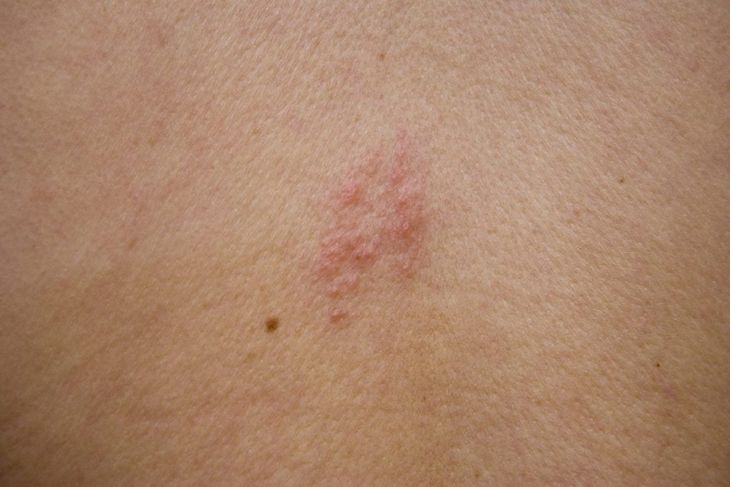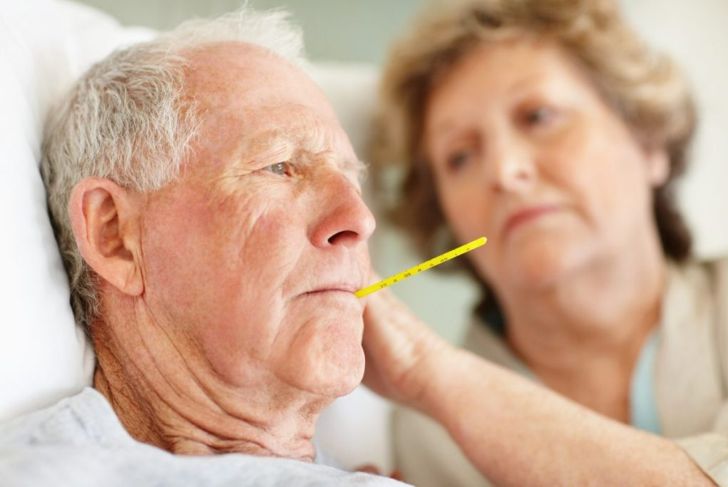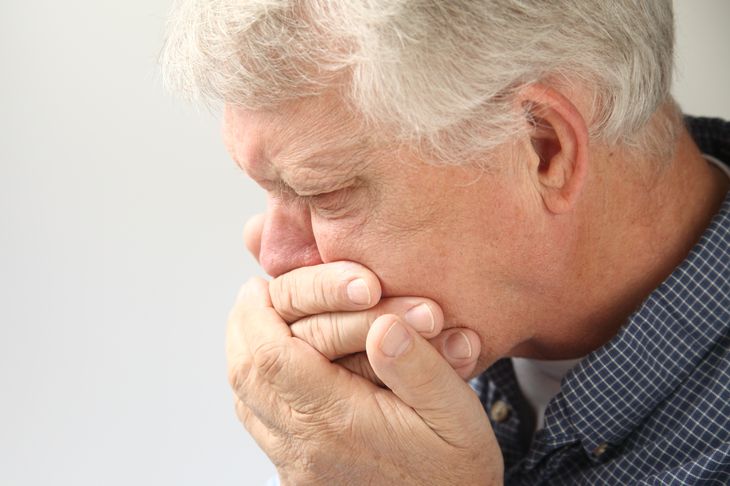Shingles are a common but serious viral infection that causes a painful rash. Only people who have had chickenpox can get shingles — both are caused by the varicella-zoster virus (VZV). After chickenpox clears, an inactive form of the varicella virus stays in the spinal cord and brain and can reactivate, resulting in shingles. People in their 60s and 70s are at higher risk of developing shingles. However, it can also occur in children and those who have HIV, cancer, or other medical conditions that cause weakened immune systems.
Burning, Numbness, or Tingling Pain
Between one and five days, before a shingles rash appears, many people describe a burning, itching, numbness, or tingling pain on a small area of the skin. This localized pain usually develops on one side of the torso. For some, the sensation comes and goes, while others experience it constantly. Although the affected area is small, it can be extremely sensitive to touch. This early pain is sometimes mistaken for a symptom of other medical conditions that affect the lungs, kidneys, or heart.
Red Rash
A primary symptom of shingles is a red rash with raised bumps that develops between one and five days after the onset of pain. The rash generally occurs in a single broad strip or band. This band is called a dermatome, an area of the skin that is primarily supplied by a single sensory nerve. It may appear anywhere on the body, though most develop on either the left or right side of the torso [along], wrap around the waistline, and resemble burns. The face is the second most common rash location for shingles, with the skin condition appearing around the eye area and on the forehead on one side of the face. In rare cases, usually in people with extremely weak immune systems, the rash is more widespread across the body.
Blisters
About a week after the pain begins and shortly after the emergence of the red rash, blisters filled with a clear fluid form on the rash. Although they may resemble chickenpox, these blisters are localized around the rash site, and not widespread. Over two to three weeks, they turn yellow or bloody, then crust over with a scab before healing. Once the scabs fall off, the individual may notice darker spots on the surface of the skin. The more severe the shingles were, the more likely this color change will persist.
Fever and Chills
A fever is one way the immune system helps the body fight off infection, and as such, people with shingles can develop this symptom. Chills, another common response, often accompany a fever in the early stages of shingles. The fever may appear before a rash outbreak but usually occurs when the rash becomes visible. High fevers could develop after the blisters form and sometimes indicate an additional bacterial skin infection in the affected area.
Headache, Nausea, and Flu-Like Symptoms
Other symptoms common to viral infections also develop with shingles. Some people eventually diagnosed with shingles report flu-like symptoms before the rash appears, including headaches and swelling of the lymph nodes. They may feel sluggish and experience muscle aches, upset stomach, or diarrhea. Because these symptoms are so common to lesser illnesses, many people dismiss them as signs of a passing bug or virus going around and do not seek medical attention until after the rash and blisters appear.
Shingles Pain
Pain follows the development of blisters. For some people, the pain is mild, causing little more than itching or burning sensations, but some people experience severe pain in reaction to the slightest touch. This pain usually fades after a month or two, though some continue to feel pain for months or even years after visible signs of the virus have cleared. Over-the-counter pain medications usually reduce discomfort, but other prescription solutions are possible, should these fail.
Pain, but No Visible Rash
It is possible to have shingles with no visible rash. Experts call this type of shingles zoster sine herpete (ZSH) or internal shingles, and it requires urgent medical attention. The symptoms are similar to herpes zoster, but internal shingles can lead to unique symptoms that affect the eyes, nervous system, lungs, liver, and brain. Persistent pain, a cough, severe abdominal pain, pain that radiates from the spine, and headache are typical symptoms of ZSH.
Eye Shingles
When the shingles virus affects the eye area, the symptoms not only cause a great deal of discomfort but can lead to long-term complications. In these cases, the same blistering red rash that appears elsewhere on the skin due to shingles develops on the forehead, eyelids, and nose. The individual may experience burning, throbbing eye pain and excessive tearing. There is usually significant redness, with swelling that occurs not only in the tissues surrounding the eye, but on the eyelid, retina, and cornea as well. People with eye shingles also report blurry vision and sensitivity to light. Complications of eye shingles include scarring and vision loss.
Long-Term Pain
If pain continues in the area where the shingles first occurred, long after the shingles rash has healed, it may indicate postherpetic neuralgia (PHN). The risk of developing PHN increases with age. Those who have had shingles should seek medical attention if they experience pain for three months or longer after the rash and blisters have healed. People with PHN may feel numbness accompanied by an itching sensation and extreme sensitivity in the affected area.
Hiccups
In extremely rare cases, the shingles virus causes hiccups that can continue for weeks. If the rash develops in the neck area, the varicella-zoster virus can infect the dermatomes in the phrenic nerve, which originates in the neck. Experts believe that because the phrenic nerve supplies nerves to the diaphragm, the infection may cause respiratory failure if left untreated.

 Home
Home Health
Health Diet & Nutrition
Diet & Nutrition Living Well
Living Well More
More




















